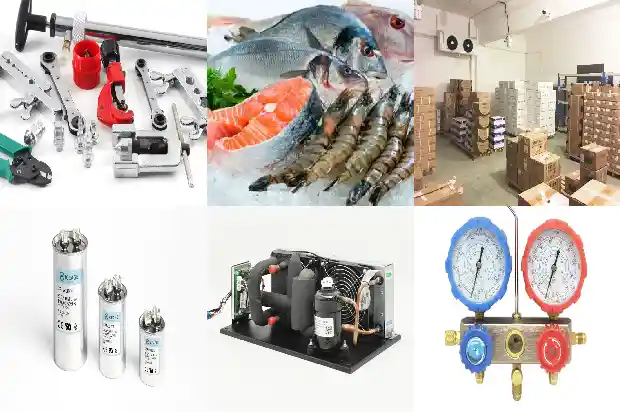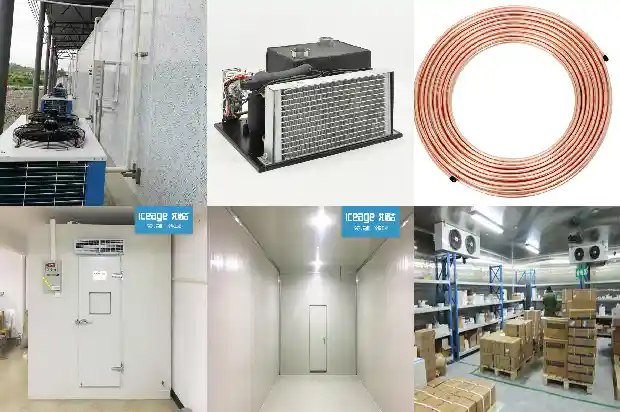Precautions for Welding Air - conditioner Copper Tubes
2025-03-17
- Basic Knowledge of Air - conditioners
An air - conditioner consists of an indoor unit (evaporator);
an outdoor unit (condenser);
The refrigerant circulates between the indoor and outdoor units through the compressor to complete the conversion of cooling and heating.
The following is the schematic diagram of air - conditioner cooling and heating:
By switching the four - way valve, the flow direction of the refrigerant is controlled to complete the conversion between cooling and heating. - Principle of the Cooling System
After each component in the air - conditioner is connected by copper tubes, it is completely sealed to form a pipeline.
"Refrigerant" is sealed in this pipeline.
The welding work is to weld the pipeline well to prevent leakage, so that the refrigerant can flow in the pipeline without leakage. This can improve the quality of the air - conditioner, reduce its manufacturing cost, and reduce the impact on the environment.
Cooling: Compressor → Four - way valve → Outdoor unit → Indoor unit. In this way, the air - conditioning system completes the cooling process.
Heating:
Compressor → Four - way valve → Indoor unit → Outdoor unit. In this way, the air - conditioning system completes the heating process. - Structure and Function of Each Component of the Air - conditioner
- Functions of Each Component
Compressor:
It makes the refrigerant in a high - temperature and high - pressure state inside the compressor, so as to liquefy the refrigerant and make it circulate in the pipeline. There should be compressor oil in the compressor.
The function of the compressor oil is to provide lubrication for the reciprocating motion of the compressor, reduce friction, and play a cooling role.
Filter: Filters impurities and dries moisture.
Heat exchanger: Cools the refrigerant;
Four - way valve: Switches between cooling and heating;
Pipeline system: The pipeline for refrigerant circulation;
Valve plate: The switch connecting to the indoor unit;
Electronic expansion valve: Controls the flow rate of the refrigerant.
Key Management Items for Ensuring the Quality of the Cooling System
Welding Points
① Safety Education
Structure of the welding torch and inspection method of the injector - suction type welding gun
Inspection method of gas cylinders and hose
Usage method of each component of the welding torch
Pressures of acetylene, oxygen, and nitrogen
O2: 0.2 - 0.5MPa;
C2H2: 0.05 - 0.1MPa
N2: 0.2 - 0.5MPa; Nitrogen replacement, continuous filling < 0.1MPa
Colors of acetylene, oxygen, and nitrogen hoses
O2: Blue
C2H2: Red
N2: Black
(Safety glasses, gloves, long - sleeved work clothes)
Usage and structure of the pressure - reducing valve
Precautions for replacing gas cylinders
Function, principle, and causes of the flashback arrester.
Welding Points
① Safety Education
Structure of the welding torch and inspection method of the injector - suction type welding gun
Inspection method of gas cylinders and hose
Usage method of each component of the welding torch
Pressures of acetylene, oxygen, and nitrogen
O2: 0.2 - 0.5MPa;
C2H2: 0.05 - 0.1MPa
N2: 0.2 - 0.5MPa; Nitrogen replacement, continuous filling < 0.1MPa
Colors of acetylene, oxygen, and nitrogen hoses
O2: Blue
C2H2: Red
N2: Black
(Safety glasses, gloves, long - sleeved work clothes)
Usage and structure of the pressure - reducing valve
Precautions for replacing gas cylinders
Function, principle, and causes of the flashback arrester.
② Heating Method
Ignition method of the welding torch and method of flame adjustment
Heat the copper tube until the tube color indicating a temperature of 740 - 840°C can be visually judged.
Actually experience the temperature at which the copper tube melts (holes appear). (1038°C)
Maintain the welding temperature (740 - 840°C) for 10 seconds.
Ignition method of the welding torch and method of flame adjustment
Heat the copper tube until the tube color indicating a temperature of 740 - 840°C can be visually judged.
Actually experience the temperature at which the copper tube melts (holes appear). (1038°C)
Maintain the welding temperature (740 - 840°C) for 10 seconds.
③ Method of Adding Solder
Use 1.6mm×0% solder
Position of adding solder (opposite to the heating method)
Timing of adding solder
Dripping phenomenon of solder (dripping caused by temperature difference)
Use 1.6mm×0% solder
Position of adding solder (opposite to the heating method)
Timing of adding solder
Dripping phenomenon of solder (dripping caused by temperature difference)
④ Welding Skills (Outside the Production Line)
Use 4.95mm and 4.76mm
Prepare tools such as a bench vice (to fix the tube), a small hacksaw, sandpaper, and a file
Use 4.95mm and 4.76mm
Prepare tools such as a bench vice (to fix the tube), a small hacksaw, sandpaper, and a file
⑤ Welding Skills (Inside the Production Line)
First, practice on the parts of 4.95mm and 4.76mm copper tubes.
Start with 1 spot per 2 units, and then gradually increase the frequency.
Do not give instructions in the processing state; instead, give instructions based on temperature.
Characteristics of Welding
The melting point of the solder for copper tube connection is 435°C
The solder flows by capillary action.
Steps of Welding Operations
Optimal clearance
Cleanliness of the base material and the material
Appropriate tube connection and fixation
Melt the solder by heating and make it flow
Clean the surface after welding
Welding temperature and appropriate temperature
Type of welding rod:
Function of the flux:
First, practice on the parts of 4.95mm and 4.76mm copper tubes.
Start with 1 spot per 2 units, and then gradually increase the frequency.
Do not give instructions in the processing state; instead, give instructions based on temperature.
Characteristics of Welding
The melting point of the solder for copper tube connection is 435°C
The solder flows by capillary action.
Steps of Welding Operations
Optimal clearance
Cleanliness of the base material and the material
Appropriate tube connection and fixation
Melt the solder by heating and make it flow
Clean the surface after welding
Welding temperature and appropriate temperature
Type of welding rod:
Function of the flux:
- Thermal stability
- Wettability
- Cleanability
- Isolate air, prevent re - oxidation, and avoid slag inclusions.
Types of Flames:
Neutral flame: The volume ratio of oxygen to acetylene is between 1 - 1.2; for copper.
Carburizing flame: The volume ratio of oxygen to acetylene < 1; for aluminum
Oxidizing flame: The volume ratio of oxygen to acetylene > 1.2; for iron
Analysis of Causes of Leakage during Welding
Welding Skills
Related Articles
- Do You Know the Precautions for Using Rotary Refrigeration Compressors?
- Precautions for the Design and Construction of Cleanrooms in Biopharmaceutical Industry
- Installation Precautions for the Source Components of Automatic Instruments in Refrigeration Units
- Precautions for the Installation of Automatic Instruments in Refrigeration Devices (Part One)
- Installation Precautions and Accessory Selection for Cold Storage Unit
- Operation and Precautions of Frozen and Refrigerated Auxiliary Equipment
- Precautions for Using Rotary Refrigeration Compressors
- Precautions for Commissioning of Screw Parallel Units
- Four Combustible and Explosive Refrigerants: Precautions When in Use!
- Accident Handling and Precautions for Circulating Water Pumps
- What Precautions Should Be Taken When Using a Fresh - keeping Cold Storage in Summer?
- Operations and Precautions for Multi - split Air Conditioners: Blowing Debris, Air Tightness, Vacuum Drying, and Refrigerant Charging
- Precautions for the Installation and Use of Water Flow Switches
- Precautions for the Hot Gas Bypass Valve of Refrigeration Units in Cold Storage
- Precautions for Inspecting Valves in Refrigeration Systems
- Parallel Installation and Precautions for Scroll Compressors
- Installation and Oil Return Precautions for Refrigeration Equipment Pipelines
- Precautions for Replacing Refrigeration Compressor Refrigerant Oil
